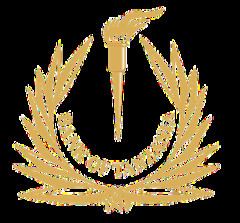Website www.bot-tz.org | ||
 | ||
Currency Tanzanian shillingTZS (ISO 4217) | ||
President magufuli visit central bank of tanzania bot by suprise
The Bank of Tanzania (Swahili: Benki Kuu ya Tanzania) is the central bank of the United Republic of Tanzania. It is responsible for issuing the national currency, the Tanzanian shilling.
Contents
- President magufuli visit central bank of tanzania bot by suprise
- Us television tanzania bank of tanzania
- History
- Arusha declaration
- Liberalization
- Board of Directors
- List of Governors
- Branch Network
- Financial Inclusion
- Criticism
- References
The bank was established under the Bank of Tanzania Act 1965. However, in 1995, the government decided that the central bank had too many responsibilities, and was thus hindering its other objectives. As a result, the government introduced the Bank of Tanzania Act 1995, which gave the bank the single objective of monetary policy.
It is governed by a Board of Directors consisting of ten people, four of whom are ex officio members which have three advisory committees that can assist them. The bank is headed by its Governor, assisted by three deputy governors in Administration, Economic and financial policies and Financial stability.
Us television tanzania bank of tanzania
History
The Bank of Tanzania was chartered by the first parliament of Tanzania through the Bank of Tanzania Act of 1965 following the dissolution of the East African Currency Board in 1965. The bank commenced operations on June 14, 1966 and was inaugurated by the first president of the country, Julius Nyerere.
Arusha declaration
Immediately after its formation, the Arusha declaration was proclaimed and the traditional roles of the bank was modified to accommodate for the changed in economic system. The lack of competition in the financial markets meant the bank had to reorient its role in the economy. After 1971 The Exchange Control Ordinance and Import Control Ordinance allowed the bank to apply the following plans:
With increased villagisation during the time period and the continued weakness in the balance of payment of the bank, the Bank of Tanzania act was amended in 1978 to give the bank more control. The Act shifted the responsibility of financial planning from the ministry of finance and planning directly to the bank.
Liberalization
Following the liberalization of the economy in 1995 and the rapid rate of inflation and devaluation in the Tanzanian shilling, the Bank of Tanzania act of 1995 was passed which clarified the primary objective of the central bank to establish a monetary environment to ensure Price stability. The act was further clarified in 2006 and is the current governing act for the bank.
Board of Directors
The Bank of Tanzania has a board of directors consisting of 10 people. Four of the members are directly appointed by the President of Tanzania. The ministry of Finance and the Principal secretary to the treasury of the Revolutionary Government of Zanzibar also appoint a member each to the board.
The current board composition consists of the:
List of Governors
Branch Network
The bank is head quartered in Dar es salaam in the heart of the financial district of the city and also maintains branches in the following cities: Arusha, Mbeya, Mwanza, Mtwara, Zanzibar. The banks latest branch was opened in Mtwara due to the recent boom in economic growth in the southern regions. The bank also has its own training institute located in Mwanza.
Financial Inclusion
The Bank is active in promoting financial inclusion policy and is a leading member of the Alliance for Financial Inclusion. It is also one of the original 17 regulatory institutions to make specific national commitments to financial inclusion under the Maya Declaration during the 2011 Global Policy Forum held in Mexico.
In 2016 the central Bank Chief Professor Benno Ndulu renewed the bank's commitment by launching the National Financial Inclusion Framework (NFIF),2016-2020. The objective is to reduce the number vulnerable households due to low unstable incomes, low confidence and self-exclusion from the current 28.2 per cent.
Criticism
Recently, Bank of Tanzania was involved in an incident which resulted in an audit of its External Arrears Account. About Tshs 133 billion were discovered to have been lost in 2005 through dubious payments. As a result, the President of Tanzania fired the bank's Governor, D. T. S. Ballali, on 9 Jan 2008. Professor Benno Ndullu was appointed to take this position on the same day.
